Team 1 and team 2
Coordinator teacher: Raül
We will compile buildings and monuments in this page.
Students must collect information about other partners regions in buildings and monuments and write it below in alphabetical order, and including the same structure and order as the example provided.
For each example we will provide name (original and English), location, brief description, picture, link to website about.
Example:
Eiffel Tower (tour Eiffel)
location: Paris, France
brief description: A 324 meters metallic tower built for 1889 World's Fair. When it was build it became the tallest man-made structure in the world, and nowadays it is the most-visited paid monument in the world.
link: https://en.wikipedia.org/wiki/Eiffel_Tower
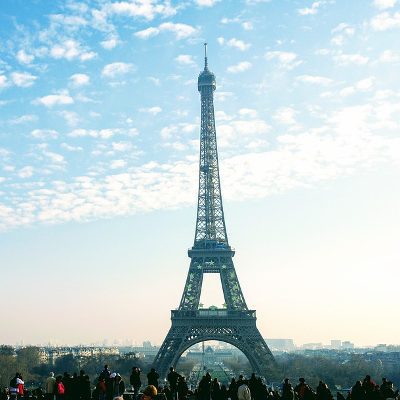
Image source: https://pixabay.com/en/france-eiffel-tower-le-tour-eiffel-1930766
student: Tadeo Jones (team 0)
- - - - LET'S GO, HERE BEGINS YOUR WORK - - - -
Palace of Versailles ( Château de Versailles)
Location: Versailles, France
Brief description: The Palace of Versailles, is a royal Château in Versailles in the Île-de-France region of France. It is now open as a museum and is a very popular tourist attraction.
Link: https://es.wikipedia.org/wiki/Palacio_de_Versalles
Student: David Pérez Maciá (team 1)
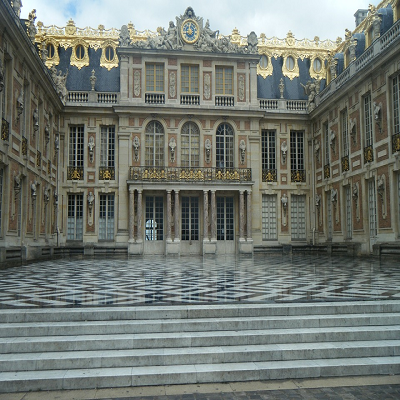
- - - - - - - - - - - - - - - - - - - - - - - - - - - - - - - - - - - - - - - -
Belém Tower (Torre de Belém)
Location: Lisbon, Portugal
Brief description: Belém Tower is a fortified tower located in the civil parish of Santa Maria de Belém in the municipality of Lisbon, Portugal. It is a UNESCO World Heritage Site (along with the nearby Jerónimos Monastery) because of the significant role it played in the Portuguese maritime discoveries of the era of the Age of Discoveries.
Link: https://en.wikipedia.org/wiki/Bel%C3%A9m_Tower
Student: David Pérez Maciá (team 1)
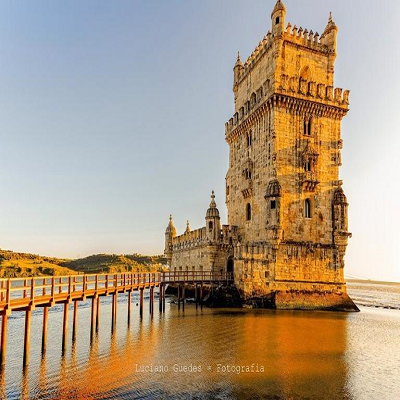
Reviewed by Roberto, Simone, Tomé, Luís (Team 1)
--------------------------------------------------------------------------
Ephesus (Ἔφεσος)
location: Selçuk, Turkey
Brief description:It was an ancient Greek city on the coast of Ionia. It was built in the 10th century BC. During the Classical Greek era it was one of the twelve cities of the Ionian League. The city flourished after it came under the control of the Roman Republic in 129 BC.
Link: https://en.wikipedia.org/wiki/Ephesus
Student: Alexander Tarí Vilar (team 2)
----------------------------------------------------------------------------
Basilica Cistern (Yerebatan Sarnici)
Location: Istanbul, Turkey
Brief description:The Basilica Cistern is the largest of several hundred ancient cisterns that lie beneath the city of Istanbul. The cistern, located 150 metres southwest of the Hagia Sophia on the historical peninsula of Sarayburnu, was built in the 6th century during the reign of Byzantine Emperor Justinian I.
Link: https://en.wikipedia.org/wiki/Basilica_Cistern
Student: Alexander Tarí Vilar (team 2)
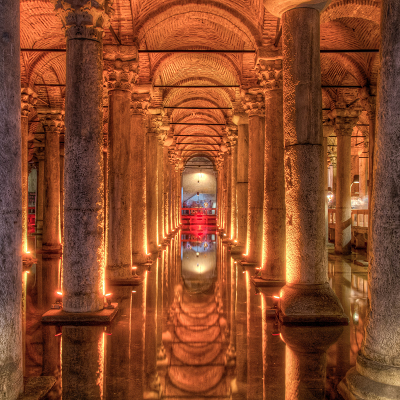
- - - - - - - - - - - - - - - - - - - - - - - - - - - - - - - - - - - - - - - - -
Rossio Square
location: Lisbon, Portugal
brief description: setting of popular revolts and celebrations, bullfights and executions, and is now a preferred meeting place of Lisbon natives and tourists alike.
link: https://en.wikipedia.org/wiki/Rossio_Square
student: Luis Miguel Pedriza Abella (team 1)
Reviewed by Roberto, Simone, Tome, Luís (Team 1)
- - - - - - - - - - - - - - - - - - - - - - - - - - - - - - - - - - - - - - - - -
Trajan Fountain
location: Izmir, Turkey.
brief description: It was constructed for the honor of Emperor Trajan, and the statue of Trajan stood in the central niche on the facade overlooking the pool.
link: http://www.ephesusturkey.com/ephesus-highlights/trajan-fountain/
student: Luis Miguel Pedriza Abella (team 1)
- - - - - - - - - - - - - - - - - - - - - - - - - - - - - - - - - - - - - - - - -
Orient Station(Gare do Oriente )
location: Lisboa, Portugal
brief description: is one of the main Portuguese intermodal transport hubs, and is situated in the civil parish of Parque das Nações, municipality of Lisbon.
link: https://en.wikipedia.org/wiki/Gare_do_Oriente
student: Yoel García Carrera (Team 2)
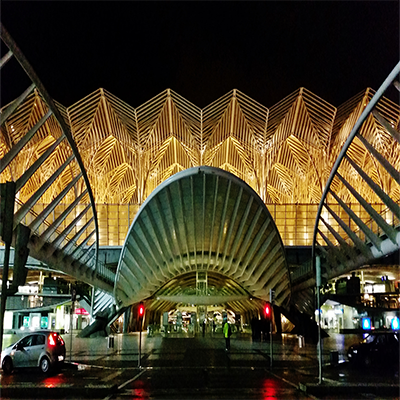
Reviewed by Roberto(Team 1)
- - - - - - - - - - - - - - - - - - - - - - - - - - - - - - - - - - - - - - - - -
Louvre museum (Musée du Louvre)
location: Paris, France.
brief description: Is the world´s largest art museum and a historic monument. A central landmark of the city, it is located on the right bank of the Seine in the city´s first arrondissement.
link: https://en.wikipedia.org/wiki/Louvre
student: Yoel García Carrera (Team 2)
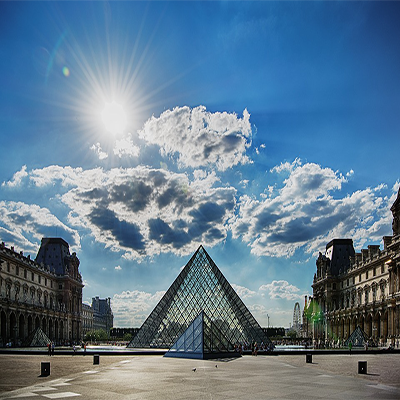
- - - - - - - - - - - - - - - - - - - - - - - - - - - - - - - - - - - - - - - - -
Hierapolis (Ἱεράπολις)
location: Pammukale, Turkey
brief description: The ruins of an ancient city that dates from the 2nd century BC. Located on hot springs, it consist of several structures, like the Theatre, the Temple of Apollo, the Nymphaeum and the Necropolis.
link: https://en.wikipedia.org/wiki/Hierapolis
student: Gabriel Pacheco Sempere (team 1)
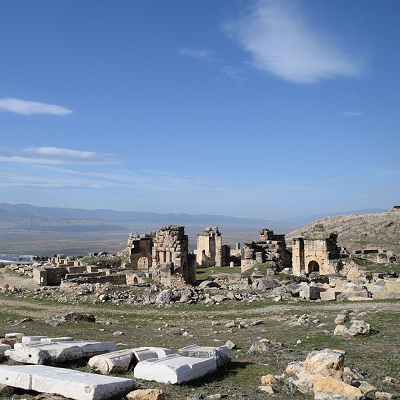
- - - - - - - - - - - - - - - - - - - - - - - - - - - - - - - - - - - - - - - - -
Grand Palais (Grand Palais des Champs-Élysées)
location: Paris, France
brief description: Construction of the Grand Palais began in 1897 as part of the preparation works for the Universal Exposition of 1900. The building reflects Beaux-Arts architecture's taste for ornate decoration.
link: https://en.wikipedia.org/wiki/Grand_Palais
student: Gabriel Pacheco Sempere (team 1)
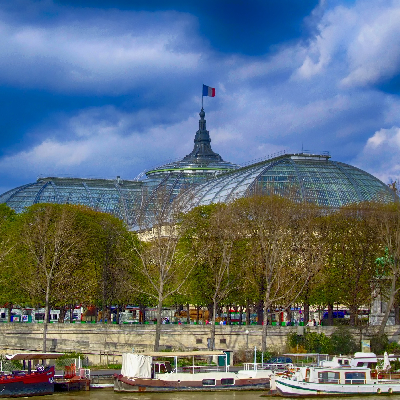
- - - - - - - - - - - - - - - - - - - - - - - - - - - - - - - - - - - - - - - - -
Jorge Castle (Castelo de São Jorge)
locatication: Lisboa, Portual
brief description:This Castle, built in the 6th century a.C, It has 6000 m2 of surface.
The building consists of several towers and sentry boxes, a pit and two courtyards.
Classified as a National Monument by Decree on June 16, 1910.
link:https://en.wikipedia.org/wiki/São_Jorge_Castle
student: Almudena Domene Corral (team 2)
location: Lisboa, Portugal
Brief description:This Castle, built in the 14th century. The fortification, built by the Moors in the mid-11th century,
was the last defensive stronghold for the elite who resided on the citadel: the Moorish governor whose palace was nearby,
and the elite city administrators whose homes are visible today in the Archaeological Site.
http://castelodesaojorge.pt/en/history/
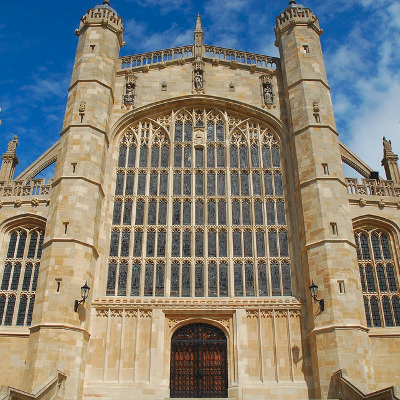 Wrong Image
Wrong Image
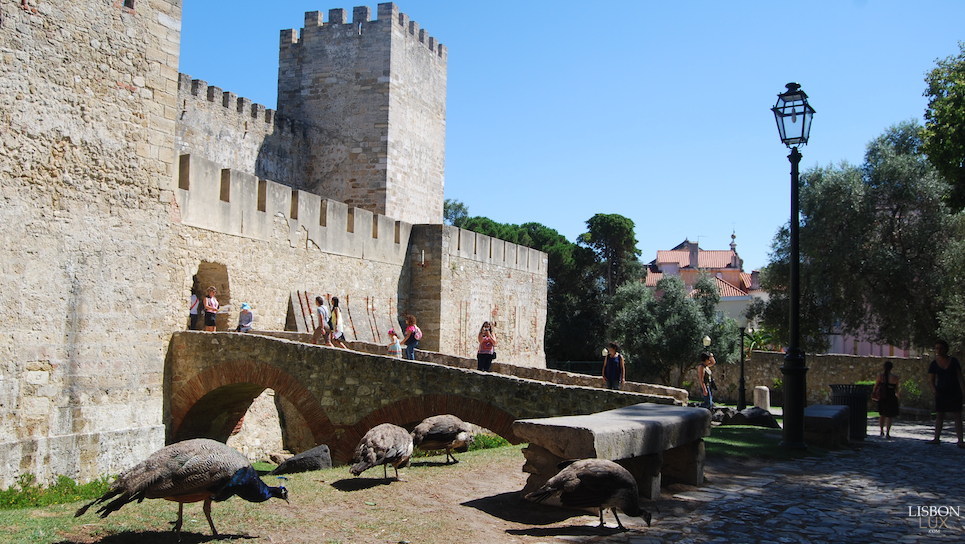
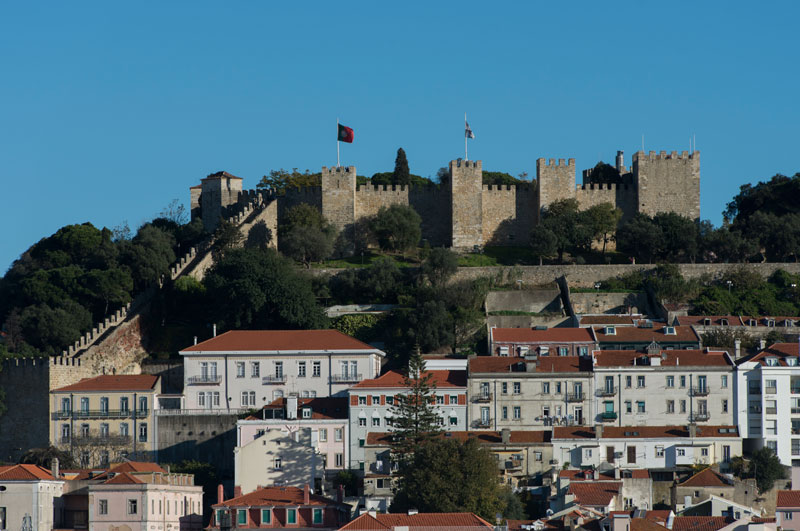
Reviewed by Luis Santos (team 1)
- - - - - - - - - - - - - - - - - - - - - - - - - - - - - - - - - - - - - - - - -
Notre-Dame de Paris (Cathédrale Notre Dame)
locatication: Paris, France
brief descripction:Its construction began in the year 1163 and was completed in the year 1345.
It's gothic architeture. Important events were celebrated there, highlighting the coronation of Napoleon Bonaparte.Nowdays it is destination for tourist use.
link:https://en.wikipedia.org/wiki/Notre-Dame_de_Paris
student: Almudena Domene Corral (team 2)
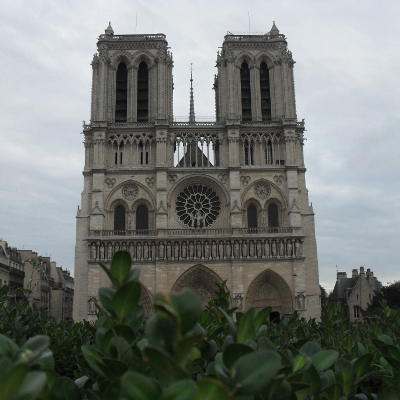
---------------------------------------------------------------------------------------------------
Alhambra of Granada
Andalusia, Spain
Arab writers used to compare to GranadaLike a great Crown in whose front it excels the diadem of the Alhambra. Although of an eminently Nasrid style, this monument is a superposition of different eras and architectural styles. It was originally built in the year 889, in the middle ages, and then largely ignored until the Moorish conquest. The Muslims removed this palace from the ruin and turned it into an authentic architectural jewel. With a clear Byzantine influence, the artists who forged this piece of monument developed a new style that is reflected in the capitals, arches and decorative details of the ceilings. When the Christians took control of Granada, they began to alter parts of the castle to make room to the rebirth removing arabesque details and decorations
Link:http://www.andalucia.com/cities/granada/alhamhistory.htm
student:Zeynep Dilara KAYA(TEAM2)
Reviewed by Yoel García Carrera (Team 2)
--------------------------------------------------------------------------------------------------------
Mosque of Cordoba
Andalusia, Spain
And from one Spanish-Muslim work to another. In fact, it is said that the construction of the Alhambra in Granada is inspired by the magnificent details of the mosque of Cordoba. This Umayyad-style religious building began to be built in 785, following the Muslim invasion. The work grew throughout the duration of the Islamic conquest. But once the Christians regained control of the city, the modifications and additions began. Back in the 1500’s a Renaissance-style basilica was incorporated into the mosque. The Christian cathedral and the Muslim mosque became a single building, which they are today. Without divisions neither physical nor spiritual, two opposite worlds in many ways coexist in perfect harmony complementing each other stylistically
link:https://tinyurl.com/y8x7w9eh
student: Mustafa YILMAZ (TEAM2)
Reviewed by David Pérez Maciá (Team 1)
(The link must redirect to a page with more information of the monument)
----------------------------------------------------------------------------------------------------------
Aqueduct of Segovia
Castilla y Leon, Spain
In the middle of Castilla, we find a loophole of what once was one of the best civil works in history. It is the imposing aqueduct that the Romans built there in the first century and served to transport water from the mountains to the city. The aqueduct of Segovia has 166 arches that run about 15 kilometers across the countryside and urban area. This marvel of civil engineering has been standing almost intact for thousands of years despite wars and conflicts. In 1992 the municipality of Segovia decided to cut the traffic below the aqueduct as the vibration produced by the traffic was affecting its structure.
Llink:http://ak3.picdn.net/shutterstock/videos/7193293/thumb/1.jpg
student:Yusuf ESMER(TEAM2)
Reviewed by Almudena Domene Corral (Team 2)
(The link must redirect to a page with more information of the monument)
------------------------------------------------------------------------------------------
Sagrada Familia
Barcelona, Spain
Really interesting monuments in Spain. The Sagrada Familia is the unfinished work of the modern architect Antoni Gaudí. Well, it’s much more than that. It is the monument that brings together more tourists a year in Barcelona. This colossal temple is one of your favorites for many reasons. But one of them is the magnificent façade of the Nativity, richly ornamented. Or its interior, which resembles a forest of white columns that are colored by the reflection of the sun on the large windows of stained glass. If you approach there, you will see how they are working on the construction of the first sacristy and the central towers. And when they finish, the main façade, also known as the Portal de la Gloria, remains.
Link:https://tinyurl.com/ycalp757
student:Muhammet GÜLER(TEAM2)
Reviewed by Gabriel Pacheco Sempere (Team 1)
(The link must redirect to a page with more information of the monument)
--------------------------------------------------------------------------------------------------------
Cathedral of Burgos
Castilla y León, Spain
It is difficult to speak of the Cathedral of Burgos without paying special attention to its main façade inspired by those of the cathedrals of Paris and Reims and which is considered as the most important sculptural manifestation of Gothic in Castile. Although impressive, we recommend that you take your time and enjoy all the treasures that are hidden inside. Of note are the Condestable Chapel, in Elizabethan Gothic style; As well as the wonderful golden staircase and the tomb of the Cid and Dona Jimena. Come on, one of the monuments in Spain that you should see already … if you have not already done so.
Link:https://encrypted-tbn0.gstatic.com/images?q=tbn:ANd9GcTdlbloo8eA77KQoKBPyW6MlorKeOxFwMsksDjF8BDL53ZOWqQ7dg
student:Alihan ÇULUKEN(TEAM2)
Reviewed by Alexander Tarí Vilar (Team 2)
(The link must redirect to a page with more information of the monument)
JERONIMOS MONASTERY (Mosteiro Dos Jeronimos)
location:portugal/lisbon
The monastery was populated by monks of the Order of Saint Jerome (Hieronymites), whose spiritual job was to give guidance to sailors and pray for the king's soul. It is one of the great triumphs of European Gothic (UNESCO has classified it a World Heritage monument), with much of the design characterized by elaborate sculptural details and maritime motifs.This style of architecture became known as Manueline, a style of art that served to glorify the great discoveries of the age.
Link:http://www.golisbon.com/sight-seeing/jeronimos.html
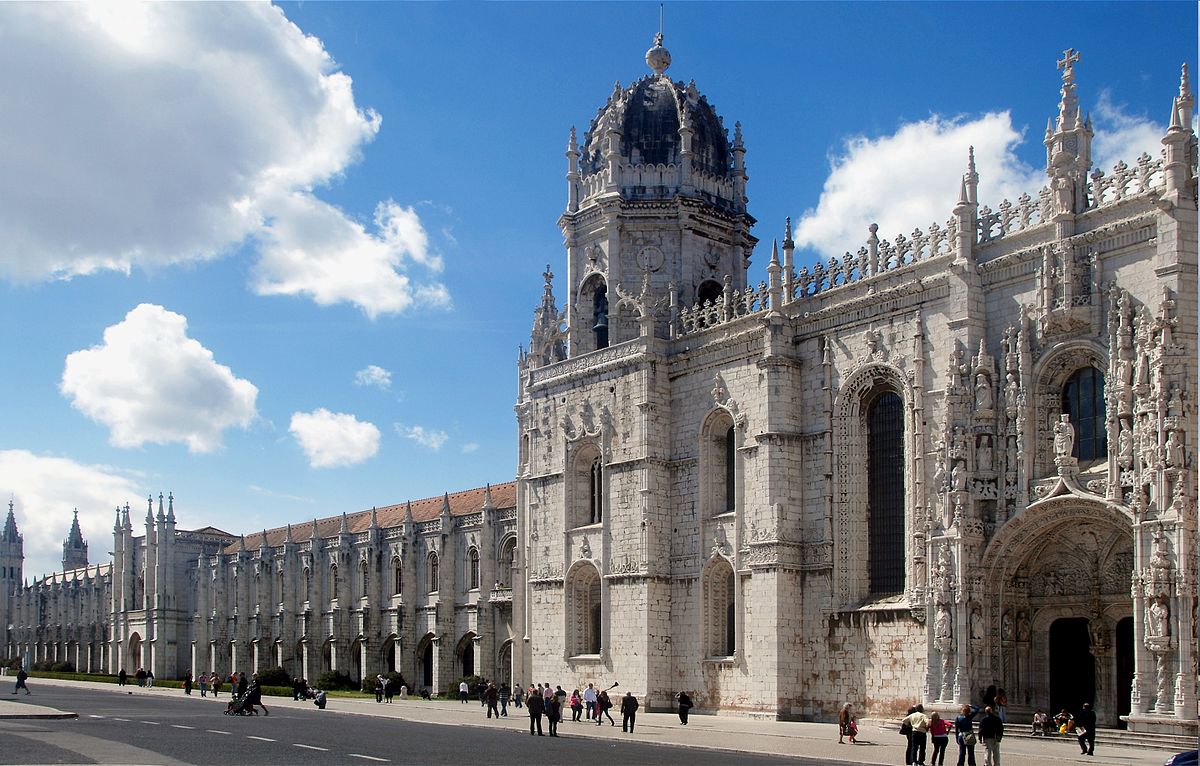
student:Yunus Emre ALAKAZ(team 1)
Reviewed by: Tomé (Team1)
Santuario Santuário Nacional de Cristo Rei
location:Portugal/almada
Catholic monument and shrine dedicated to the Sacred Heart of Jesus Christ overlooking the city of Lisbon situated in Almada, in Portugal. It was inspired by the Christ the Redeemer statue of Rio de Janeiro, in Brazil, after the Cardinal Patriarch of Lisbon visited that monument. The project was inaugurated on 17 May 1959, while Portugal was ruled by the authoritarian President of the Council of Ministers Antonio de Oliveira Salazar who gave his final permission for the project. The giant statue in cement was erected to express gratitude because the Portuguese were spared the effects of World War II
Link:http://www.golisbon.com/blog/2007/08/01/cristo-rei/
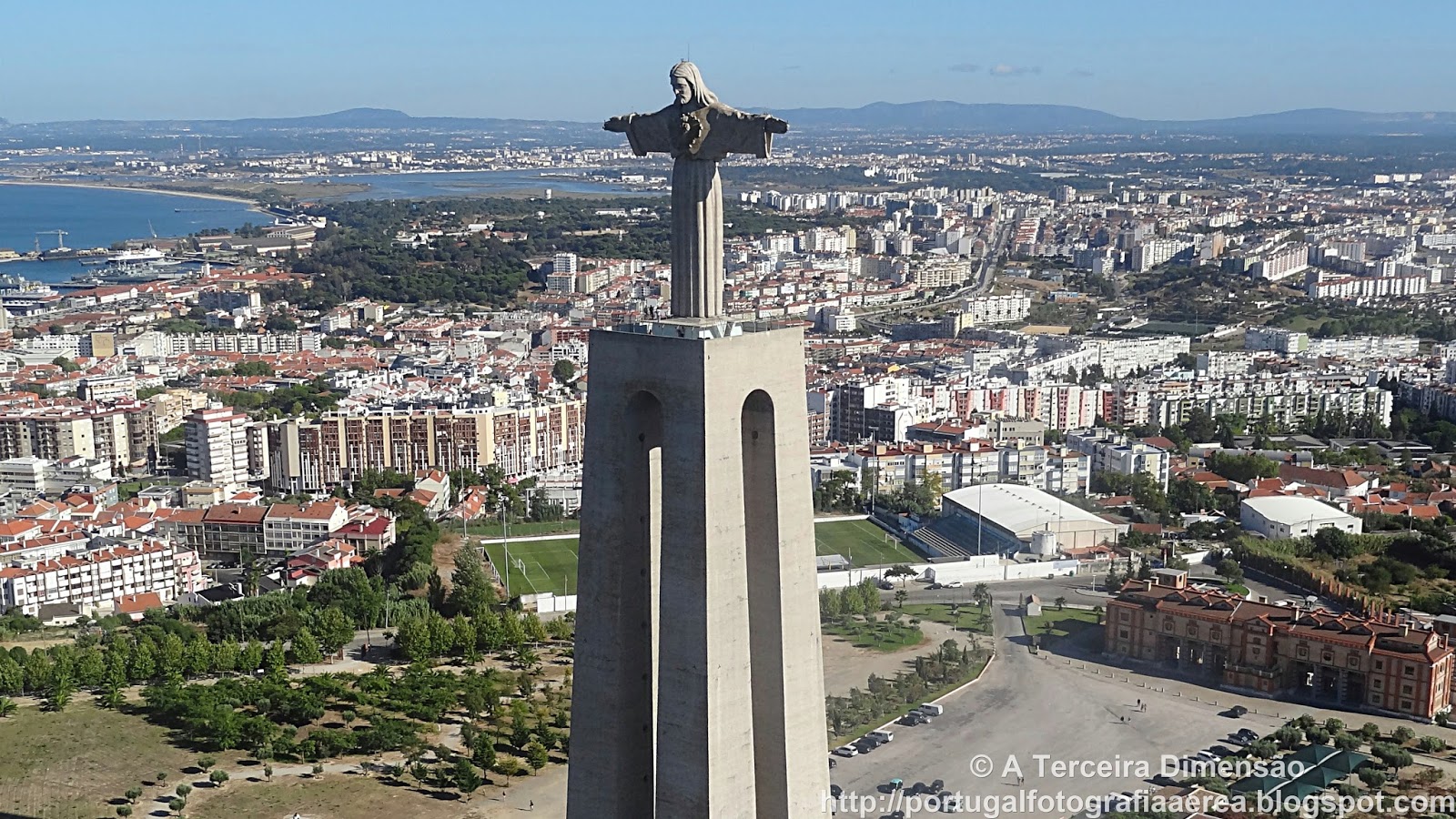
Student:Yunus Emre ALAKAZ(team1)
Reviewed by: Simone (Team1)
Mansour and Micha
Name: Alhambra
Location: Spain, Grenada
Date of construction:AD 889
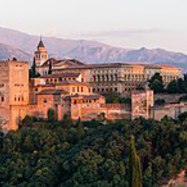
https://en.wikipedia.org/wiki/Alhambra
THE ALHAMBRA
The history of the Alhambra is intimately linked to the site of the city of Granada. The Alhambra is a beautiful complex of buildings and gardens created for over 600 years.
It is situated on a rocky hill that is difficult to reach, on the banks of the river Darro, protected by mountains and surrounded by forests.
Originally conceived as a military zone, the Alhambra became a residence for the kings and the court of Granada in the middle of the 13th century, after the establishment of the Nasrid kingdom and the construction of the first palace by the founding king Mohammed Ibn Yusuf Ben Nasr, known as Alhamar.
During the 13th, 14th and 15th centuries, the fortress is transformed into a citadel with high walls, and defensive towers, which houses two main areas: the military zone or Alcazaba, barracks of the royal guard, and the medina or city palate , where we can see Nasrid Palaces and the remains of noble and plebeian who lived there, and the Palace of Charles V which was built after the conquest of the city in 1492 by the Catholic Kings.
The monumental complex also includes an independent palace in front of the Alhambra, surrounded by vegetable gardens, which was a holiday resort for the kings of Granada.
https://www.alhambradegranada.org/en/info/historicalintroduction.asp
_________________________________________________________________________
Name: The Blue Mosque
Location: Istanbul, Turkey,
The Blue Mosque, or to give it its’ correct name, The Sultan Ahmed Mosque named after the 14th Ottoman Sultan Ahmed I who commissioned its construction. Started in 1609 it took seven years to build.
The most striking feature of the exterior is the beautiful domes that cascade down from the great central dome. None of the exterior is blue - the name ‘Blue Mosque’ comes from the colour of the tiles of the interior. The main dome has a height of 43 metres and is 23.5 meters in diameter. A notable feature of the Blue Mosque is that it has six minarets as it is unusual to have more than four.
GPS location: 41.005701, 28.977566
N41 0.342 E28 58.654
41° 0' 20.52" N, 28° 58' 39.24" E
LINK: http://www.famous-historic-buildings.org.uk/turkey_6.html
Student:Simão 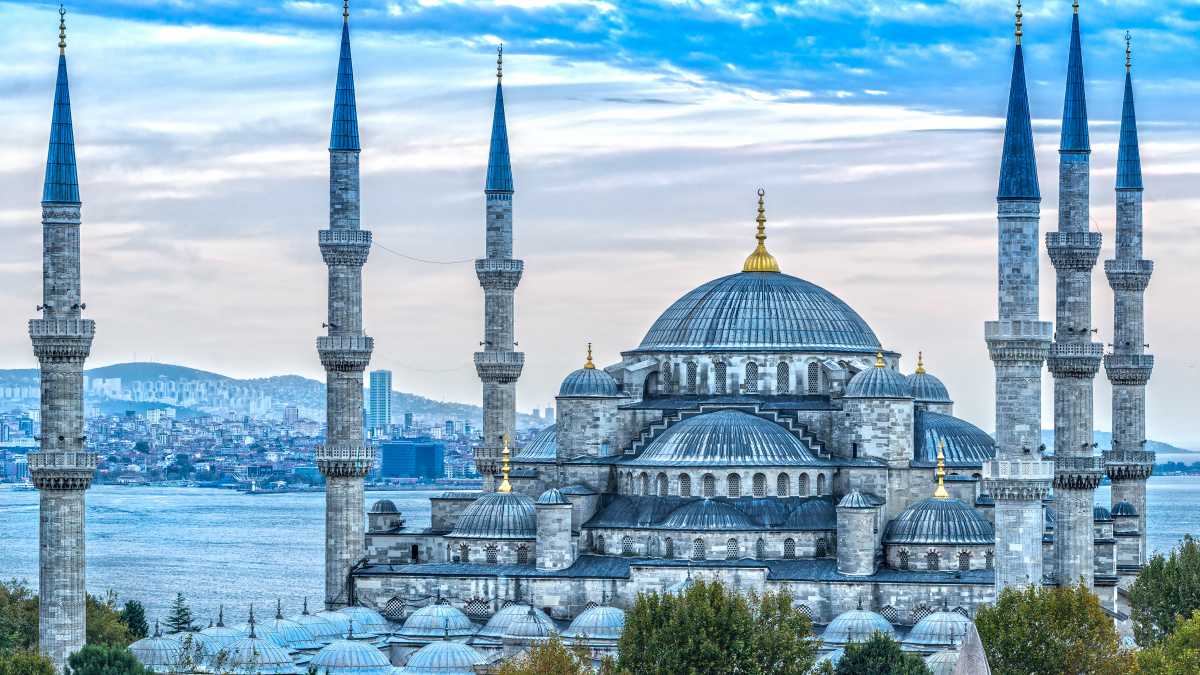 (team2)
(team2)
Student:Leandro
Name: Topkapi Palace
Location: Istanbul, Turkey
Coordenation:
-Latitude: 41º 00’ 46.80” N
-Longitude: 28º 59’ 2.40” E
Brief description: The Topkapi Palace is situated in the heart of Istanbul.
The construction began in 1459 by the Sultan Mehmed II.
Link: http://www.famous-historic-buildings.org.uk/turkey_6.html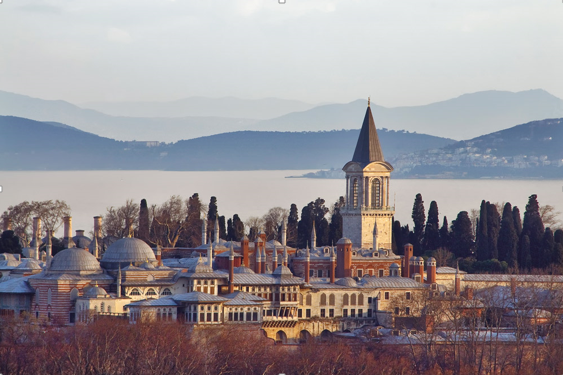
Reviewed by:
-----------------------------------------------------------------------------------------------------------------------------------------------------------------------------------------------------
Student:Ruven Lopes
Name:Side
Location:turkey
Coordenates:
36° 46′ 0″ N, 31° 23′ 20″ E
Dating back to the 6th century BC, Side - named after Sida, daughter of Danaus - was one of the earliest settlements of the Anatolia region and was renowned for its harbour during the Hittite period when it became a prominent commercial town trading with the countries in the eastern and western Mediterranean.
-----------------------------------------------------------------------------------------------------------------------------------------------------------------------------------------------------
Castle of Óbidos
In the small town of Obidos in Eastern Portugal, the castle is the highlight. Obidos Castle and its medieval walls surround most of the old city, securing its vantage point on a hilltop. Built in the 8th century and majorly remodeled in the 13th century, this is a truly historic destination and a former Roman settlement. For the last 60 years, Obidos Castle has been a private inn. That means that you can spend the night, getting a taste of castle life for yourself. Many of the rooms have been refurbished, but they retain a style reminiscent of the past.
Link:https://en.wikipedia.org/wiki/Castle_of_%C3%93bidos
Location:Portugal
Student :Yusuf ESMER(Team 2)
Reviewed by:Leandro Ligeiro(Team 2)
-------------------------------------------------------------------------------------------------------------------------------------------------------------------------------------------------------
Dom Luís I Bridge
An iconic landmark in the city of Porto is the Dom Luis Bridge. The bridge leads away from Porto, spanning the waters of the River Douro. The bridge was built in the late 19th century, and it is made with stunning granite pillars as well as an iron framework. It is no wonder that the Dom Luis Bridge is so stunning, since it was built by Gustave Eiffel, the man who famously designed the Eiffel Tower in Paris. The bridge has two levels, but the best views are found on the upper level. Plus, there is pedestrian access on this level, letting you take in views over the river.
Link:https://en.wikipedia.org/wiki/Dom_Lu%C3%ADs_I_Bridge
Location: Porto,Portugal
Student:Yusuf ESMER(Team 2)
Reviewed by:Ruven Lopes(Team 2)
=================================================================================================================
RAIO PALACE ,BRAGA
The Palace of Raio is a Baroque-era residence in the urbanized area of the municipality of Braga, in the civil parish of São José de São Lázaro. It is an example of the late Baroque, early Rococo style of decoration by Portuguese architect André Soares, notable for his influence in the northern Baroque movement.HistoryThe construction of this ornate palace was ordered by João Duarte de Faria, a knight of the Order of Christ, who was a rich merchant.The commission was given to André Soares in 1754–1755, an architect already famous in the Braga region for his artistic and engineering projects.
Link:https://ominho.pt/wp-content/uploads/2017/01/Palacio-do-Raio.jpg
Location:Portugal
Student:Zeynep Dilara KAYA(TEAM 2)
-----------------------------------------------------------------------------------------------
History of Mevlana Museum (Green Mausoleum)
Sultan 'Ala' al-Din Kayqubad, the Seljuk sultan who had invited Mevlana to Konya, offered his rose garden as a fitting place to bury Baha' ud-Din Walad (or Bahaeddin Veled), the father of Mevlana, when he died in 1231. When Mevlana himself died on December 17, 1273, he was buried next to his father.
Mevlana's successor Hüsamettin Çelebi built a mausoleum (Kubbe-i-Hadra) over the grave of his master. The Seljuk construction, under architect Behrettin Tebrizli, was finished in 1274. Gürcü Hatun, the wife of the Seljuk Emir Suleyman Pervane, and Emir Alameddin Kayser funded the construction.
The cylindrical drum of the of the dome originally rested on four pillars. The conical dome is covered with turquoise faience. Several sections were added until 1854. Selim I decorated the interior and performed the woodcarving of the catafalques.
A decree by Ataturk in September 1925 dissolved all Sufi brotherhoods in Turkey. On April 6, 1926, another decree ordered that the Mevlana mausoleum and dervish lodge be turned into a museum. The museum opened on March 2, 1927.
Special permission granted by the Turkish government in 1954 allowed the Mawlawi dervishes of Konya to perform their ritual dances for tourists for two weeks each year. Despite government opposition the order has continued to exist in Turkey as a religious body. The tomb of Rumi, although officially part of a museum, attracts a steady stream of pilgrims
student:Muhammet Güler
link:https://bit.ly/2FNMCrJ
location:Konya/Turkey
Cathedral of the Holy Cross, Akdamar Island
The Church of the Holy Cross was once an important Armenian cathedral. The seat of the Armenian Orthodox patriarch, the cathedral was founded by King Gagik between 915 and 921 as part of a royal complex that included a palace, monastery, streets, gardens and terraced parks. The church is all that remains today.
The church was designed by the Armenian architect Trdat Mendet (also known as Manuel), who also built the cathedral in nearby Ani and helped repair Hagia Sophia's dome when it collapsed after an earthquake.
The Church of the Holy Cross was the seat of an Armenian patriarch from 1116 to 1895, after which it was abandoned due to conflict between Armenia and the Ottoman Empire. The building fell into disrepair and was neglected throughout the 20th century.
The cathedral was restored by the Turkish government beginning in May 2005. The restoration cost $1.5 million and took 18 months to complete. At a ceremony on March 29, 2007, it was officially opened as a museum. The restoration project was seen as a diplomatic step by Turkey to improve relations with Armenia, which remain very tense.
student:Muhammet Güler
link:https://bit.ly/2Ik8gc
location:Van/Turkey
----------------------------------------------------------------------------------------------------------------------------------------------------------------------------------------------------
CHORA MUSEUM
The best way to get to this part of town is to catch the Haliç (Golden Horn) ferry from Eminönü to Ayvansaray and walk up the hill along Dervişzade Sokak, turn right into Eğrikapı Mumhane Caddesi and then almost immediately left into Şişhane Caddesi. From here you can follow the remnants of Theodosius II's land walls, passing the Palace of Constantine Porphyrogenitus on your way. From Hoca Çakır Caddesi, veer left into Vaiz Sokak just before you reach the steep stairs leading up to the ramparts of the wall, then turn sharp left into Kariye Sokak and you'll come to the museum.
The building was originally known as the Church of the Holy Saviour Outside the Walls (Chora literally means 'country'), reflecting the fact that when it was first built it was located outside the original city walls constructed by Constantine the Great.
What you see today isn't the original church. Instead, it was reconstructed at least five times, most significantly in the 11th, 12th and 14th centuries. Virtually all of the interior decoration – the famous mosaics and the less renowned but equally striking frescos – dates from circa 1320 and was funded by Theodore Metochites, a poet and man of letters who was logothetes, the official responsible for the Byzantine treasury, under Emperor Andronikos II (r 1282–1328). One of the museum's most wonderful mosaics, found above the door to the nave in the inner narthex, depicts Theodore offering the church to Christ.
Today the Chora consists of five main architectural units: the nave, the two-storied structure (annex) added to the north, the inner and the outer narthexes and the chapel for tombs (parecclesion) to the south. In 2013 a second major restoration commenced. This ongoing process is happening in stages, and involves closure of parts of the museum; first the nave and the two-storey annexes on the northern side of the building, followed by the inner narthex, and finally the outer narthex and parecclesion. As the parecclesion has the finest frescos, it may not be worth visiting the church during the final stage.
location:İstanbul/Turkey
student:Muhammet Güler
link:https://bit.ly/2HZ7bTY
-------------------------------------------------------
EDIRNE SELIMIYE MOSQUE
Selimiye Mosque, which became a symbol of this city by being identified with Edirne, which became the capital of the Ottoman Empire before Istanbul, is the work of Mimar Sinan, one of the greatest and genius architects of the world. Mimar Sinan, who lived in the years when the power of the Ottoman Empire was at the height of his power, is a genius shaped by architecture and it can be said that he reflected the power of the empire with Selimiye Mosque and brought the summit point of Ottoman architecture to life. It is no exaggeration to describe the mosque as one of the most popular works of the world architectural history, not only of the Ottoman Empire. The fact that Selimiye Mosque and Kulliyesi are located in the UNESCO World Heritage List proves that this fact is accepted all over the world. The Selimiye Mosque was built in 1568 and can be completed only in 1575 with the work of about 15,000 people. Even from a very long distance the image is clearly visible, but it is felt when you enter the actual admiration glass. The dome at Selimiye Mosque represents one of the peak points reached by Mimar Sinan in his profession. Despite having such a large dome, the feet supporting the dome are not allowed to divide the interior. When the Ottoman army goes to Europe, it is possible to learn from the historical sources that it is a prayer on this mosque where 6,000 people can easily worship by taking a break in Edirne. Minarets on four corners of the glass, each with three balconies, are among the most elegant of its kind in the world. An architectural achievement to awaken astonishment was made in the thinnest way possible, although they were very long, and even when two of them went up to the honor, three different stairs were placed which did not intersect each other. Mimar Sinan, who left magnificent works on the history of world architecture, defines this mosque as "Masterful Art". In his work titled Tezkiret-ul Bünyan, which he mentioned about his works, he states that the dome he brought to the square here and Haghia Sophia's dome, and the minarets are unique.
LOCATION: TURKEY/EDIRNE
LINK:http://www.edirnevdb.gov.tr/edirne/g/b/2/selimiye9.jpg
student:Mustafa YILMAZ(TEAM2)
----------------------------------------------------------------------------------------------------------------------------------------------------------------
AYASOFYA MOSQUE
Hagia Sophia, one of the most important monuments of the world's architectural history, survived to the present day; architecture, magnificence, size and functionality of the art world is an important place in terms of.
Haghia Sophia was the largest church in the Eastern Roman Empire in Istanbul and was built three times in the same place. It was first named Megale Ekklesia (Great Church) and from the 5th century it was defined as Hagia Sophia (Sacred Wisdom). Hagia Sophia has served as the cathedral, the largest church of the capital, crowned by monarchs throughout the Eastern Roman Empire.
The first church was built in 360 by the Emperor Constantios (337-361). The first building with a basilical plan covered with wooden roof was burned and destroyed as a result of the popular uprising in 404 due to the dispute between the Emperor Eudoksia and the Patriarch Ioannes Chrysostomos of the Emperor Arkadios (395-408). (Today the mosaic of your patriot can be seen on the north tymphanon wall of Hagia Sophia.)
Today, there are no relics belonging to the first church, but Megale Ekklesia in the museum deposit is thought to belong to this structure with stamped bricks.
LOCATION:TURKEY-ISTANBUL
link:http://admin.agos.com.tr/upload/haber/ayasoyya550_1125.jpg
student:Mustafa YILMAZ(TEAM2)
|
Original name
|
Yivli Minaret
|
|
English name
|
Yivli Minaret
|
|
Type
|
Monument
|
|
Brief Description
|
The Yivli Minaret Mosque, built in 1230 by Alaaddin Keykubat, the ruler of the Seljuks of Anatolia, draws attention with his unusual minarets grooved in the Turkish architecture of Anatolia.
In addition, it is accepted that it is the oldest example of the place of worship of six domes and the type of mosque with multiple domes in Anatolia.
|
|
Artist
|
|
|
Related Link
|
http://www.kulturvarliklari.gov.tr/TR,163963/yivli-minare-camii-antalya-2016.htm
|
|
Image
|

|
Team 5